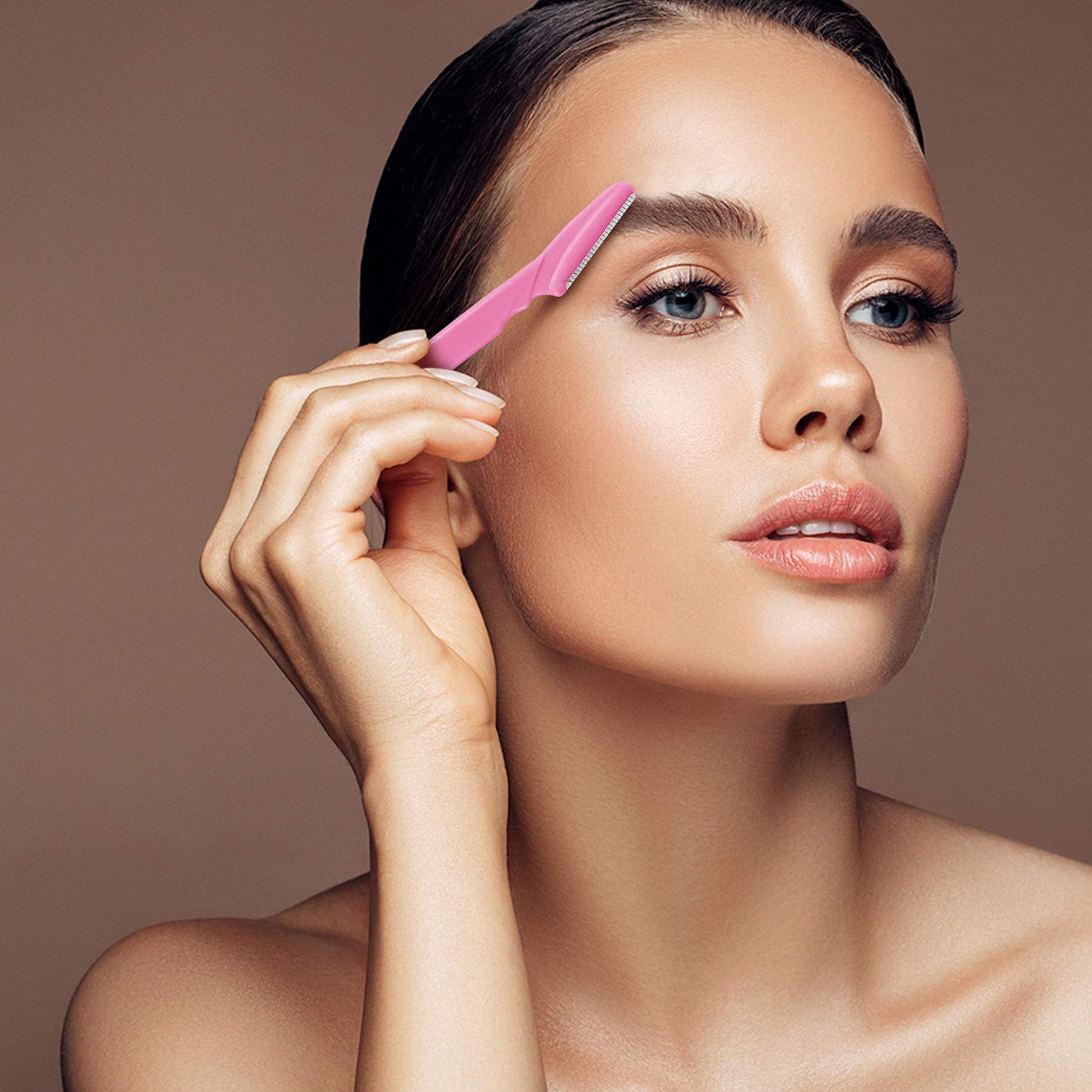Can You Use an Eyebrow Razor for Other Facial Hair Removal?
While eyebrow razors are primarily designed for shaping and grooming eyebrows, they can also be used for other facial hair removal. Here are some factors to consider:

Facial hair type:
The effectiveness of an eyebrow razor on other facial hair can vary depending on the type and texture of the hair. Eyebrow razors are generally more suitable for fine and thin hair rather than coarse or thick hair, as they are designed to be gentle and precise in order to achieve the desired eyebrow shape.
However, some people may find that an eyebrow razor is effective for removing other facial hair, such as peach fuzz or stray hairs around the lip or chin. This is particularly true for those with sensitive skin who may find other hair removal methods, such as waxing or threading, to be too abrasive or irritating.
When using an eyebrow razor on other facial hair, it is important to be cautious and gentle to avoid causing any irritation or injury to the skin. It is also important to use a high-quality shaving product, such as shave gel or cream, to help reduce friction and protect the skin.
Precision and control:
Eyebrow razors are often used to remove unwanted hair from small areas like the upper lip, peach fuzz, or sideburns. Their small size and precise control make them a convenient and effective tool for these areas. However, when it comes to larger areas or thicker hair, caution is advised when using an eyebrow razor, as they may not provide the same level of efficiency as specialized tools.
While an eyebrow razor can remove hair from larger areas, it may take longer to achieve the desired result. This is because the blade of an eyebrow razor is typically smaller and less sharp than that of a specialized tool, which can make it less effective at removing hair in large areas. Additionally, using an eyebrow razor on thicker hair may cause more irritation and discomfort, as the blade may struggle to cut through the hair.
Therefore, it is important to consider the size, texture, and thickness of the hair when deciding whether to use an eyebrow razor for hair removal. For larger areas or thicker hair, specialized tools like waxing, threading, or laser hair removal may be more efficient and effective. However, for smaller areas or finer hair, an eyebrow razor can be a convenient and affordable alternative.
Sensitivity:
Certain facial areas, such as the upper lip or chin, can be more sensitive than the eyebrows, which is why it is crucial to take extra care when using an eyebrow razor for other facial hair removal. These areas are more prone to irritation and inflammation, and using an eyebrow razor on them can cause redness, bumps, and other skin reactions. Therefore, it is important to ensure that your skin is well-prepped and moisturized before using an eyebrow razor for hair removal to minimize the risk of irritation.
To properly prep your skin for hair removal, start by cleansing the area thoroughly with a gentle cleanser. This will remove any dirt, oil, or makeup that may be present on the skin and help to prevent clogging of the pores. You may also want to exfoliate the area gently to remove any dead skin cells and further prevent clogging.
After cleansing, apply a generous amount of shaving cream or gel to the area. This will help to lubricate the skin and reduce friction during the hair removal process. It is also important to use a sharp, high-quality eyebrow razor to minimize pulling and tugging on the skin.
Once you have finished removing the hair, rinse the area with cool water and pat dry with a clean towel. Apply a soothing and hydrating moisturizer to the area to help calm the skin and reduce the risk of irritation. Look for moisturizers that are specifically formulated for sensitive skin and free from fragrances or harsh chemicals.
Maintenance:
When using an eyebrow razor for other facial hair removal, it is important to keep in mind that the blades may become dull more quickly than when used for eyebrow shaping. This is because the hair in other areas of the face may be thicker or coarser, which can cause the blades to become dull more quickly. Dull blades can lead to discomfort or skin irritation, so it’s essential to regularly check and replace the blades to maintain their effectiveness.
To keep your eyebrow razor in good condition, it is recommended to replace the blades every three to four uses or once a week, depending on how often you use it. This will help to ensure that the blades are sharp and effective, and will prevent any pulling or tugging on the skin during hair removal.
When replacing the blades, be sure to use high-quality replacement blades that are specifically designed for your eyebrow razor. Some eyebrow razors come with replaceable blades, while others need to be replaced entirely. Be sure to follow the manufacturer’s instructions carefully to ensure that you are replacing the blades correctly.